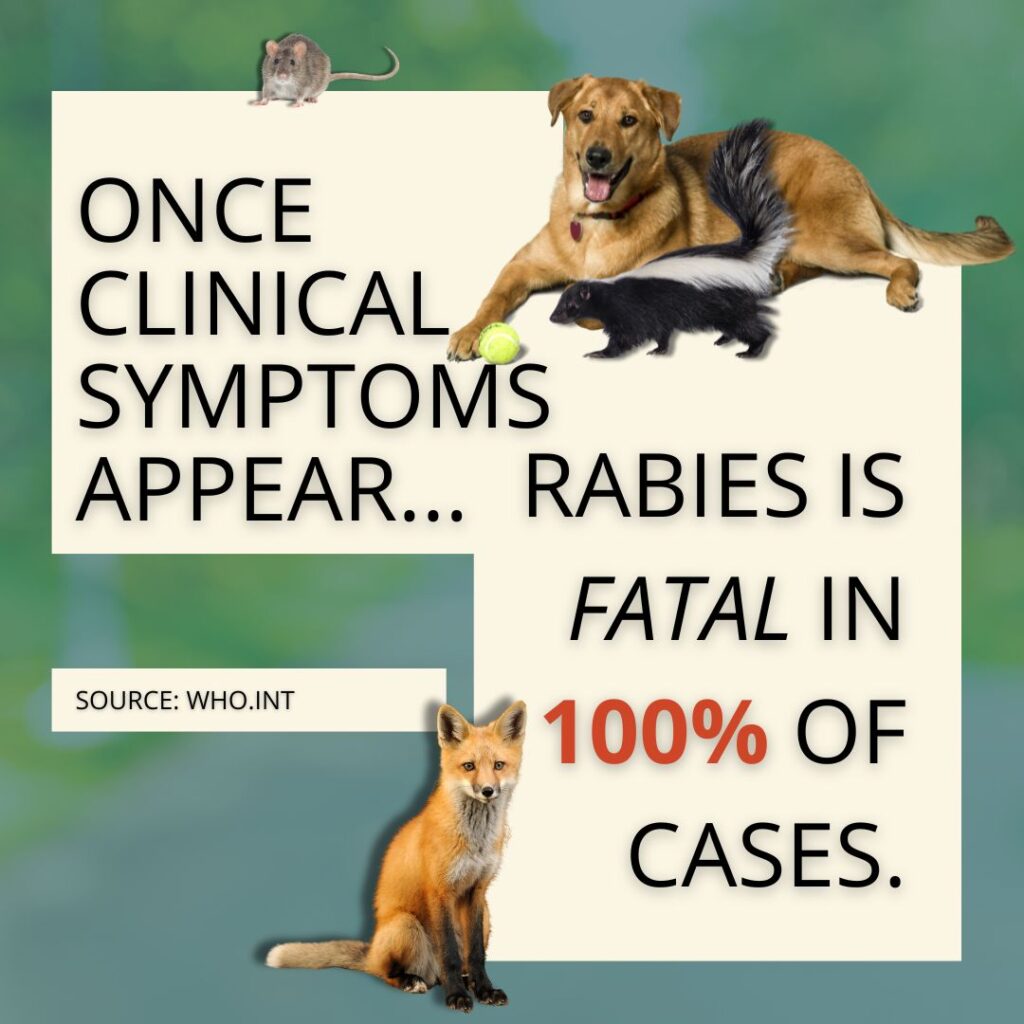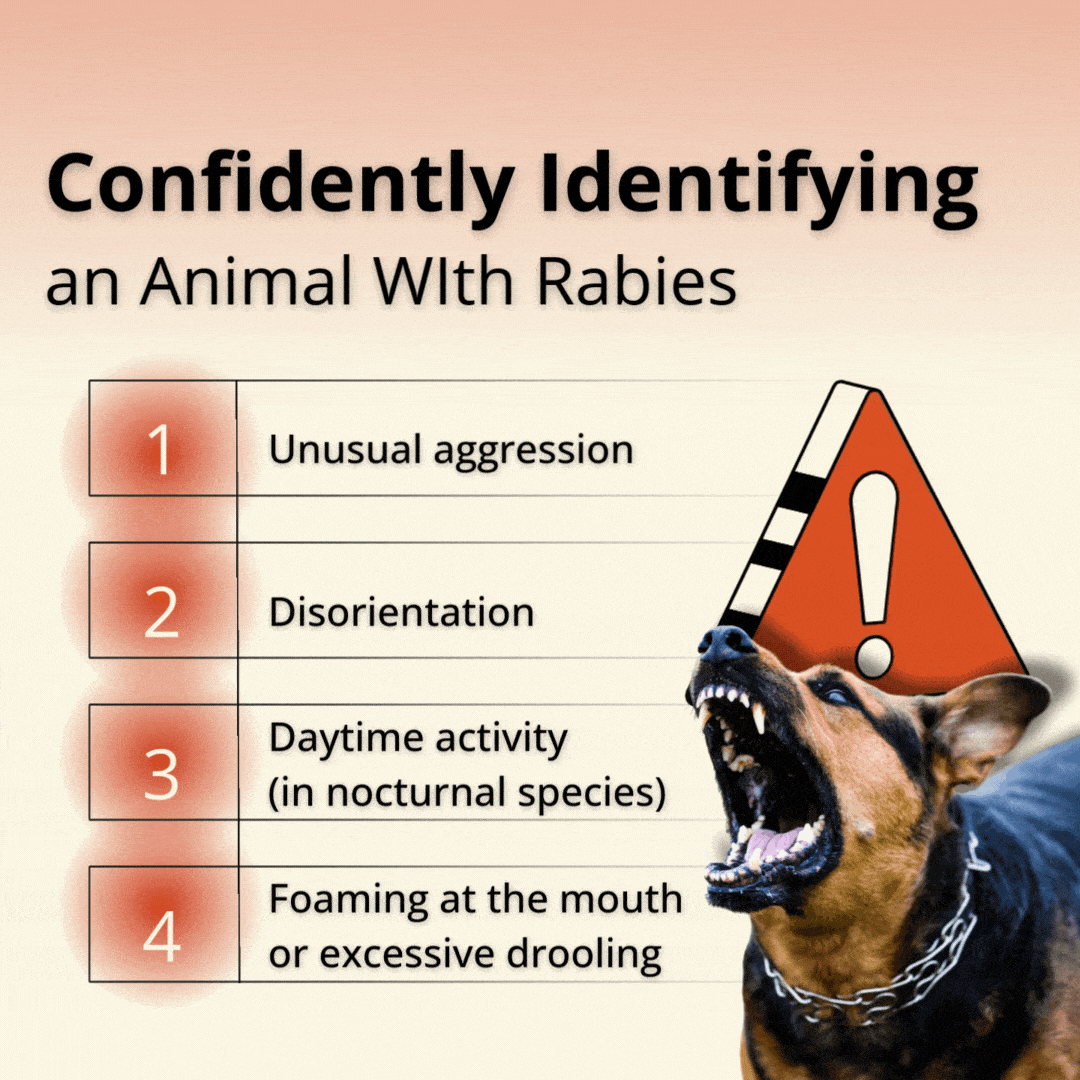If you’ve ever spotted a mouse or squirrel darting across your yard (or worse, inside your home) you’ve probably wondered whether rodents can carry rabies. Maybe you’ve just always assumed they all do.
Either way, let’s break down the facts about rodents, rabies, and how you can keep yourself and your household safe.
What Is Rabies and How Does It Spread?
Rabies is a deadly virus that attacks the brain and nervous system of mammals. It spreads through saliva, usually when an infected animal bites another animal—or a person.
Once symptoms show up, rabies is fatal, which is why understanding how it spreads is so important.
But not all animals carry rabies. In the U.S., the main carriers are bats, raccoons, foxes, and skunks. These are known as rabies reservoirs because they can carry and spread the virus. According to the World health organization though, 99% of human rabies cases are the result of dog bites or scratches.
Rodents, on the other hand? They’re a different story.

Can Rodents Carry Rabies? The Straight Answer
Here’s the good news: while rodents can technically carry rabies, it’s extremely rare.
In fact, the Centers for Disease Control and Prevention (CDC) says there are almost no documented cases of small rodents (like mice, rats, squirrels, chipmunks, or hamsters) spreading rabies to humans.
Why? Because small rodents usually don’t survive attacks from larger, rabid animals. If a rabid fox or raccoon bites a mouse, chances are the mouse won’t make it. That means the risk of a rabid rodent wandering into your home is very, very low.
However, larger rodents, like beavers or groundhogs, could pose a slightly higher risk because they’re big enough to survive those attacks. Even then, rabies in these animals is rare.
The takeaway: while it’s smart to be cautious, rodents are not a major rabies threat.
How to Spot a Potentially Rabid Rodent
Even though rabies in rodents is rare, knowing the signs can help keep your family and pets safe. Here’s what to look for:
- Unusual aggression: A rodent that acts bold or aggressive toward people or pets is a red flag.
- Disorientation: Staggering, circling, or moving strangely could signal trouble.
- Daytime activity in nocturnal species: Rats and mice are typically active at night. If you see them in broad daylight acting odd, take note.
- Foaming at the mouth or excessive drooling: This is a classic rabies symptom, though extremely uncommon in rodents.
Remember, most rodents don’t carry rabies. But even a healthy-looking rodent can carry other diseases like hantavirus or salmonella.

Safety Tips if You Encounter a Rodent
So, what should you do if you spot a rodent in or around your home?
- Do not handle it—even if it appears sick or dead.
- Keep pets away from any rodent. Cats and dogs can get infected if they tussle with a sick animal.
- Seal off entry points to prevent more rodents from getting in. Even gaps as small as a quarter-inch can let mice inside.
If you or a pet is bitten or scratched by a rodent:
- Wash the wound thoroughly with soap and water.
- Seek medical attention right away—even if the rabies risk is low.
Rabies post-exposure treatment (if recommended) can cost anywhere from $3,000 to $7,000 in the U.S. (CDC). Acting quickly helps avoid that.
How to Keep Rodents Out of Your Home
The best way to avoid rodent-related risks is to keep them out of your home altogether. Here are a few simple steps:
- Seal gaps and cracks in your foundation, walls, and around pipes or vents.
- Store food in airtight containers to avoid attracting pests.
- Clear outdoor clutter, especially near your home’s foundation. Piles of wood, leaves, or debris create perfect hiding spots.
- Trim tree branches away from your roofline—rodents love easy access.
Rodents may not carry rabies, but they do carry other health hazards. A professional pest inspection can help catch infestations early.
Other Recommended Maintenance for Pest Prevention
Keeping rodents at bay also means staying on top of general home maintenance:
- Inspect attics and crawlspaces regularly for droppings or nesting signs.
- Check screens and vents to ensure they’re intact.
- Keep garbage bins sealed and away from the home.
When to Call a Professional
DIY prevention is great, but some situations call for expert help:
- You keep seeing rodents despite setting traps or sealing gaps.
- You notice damage to insulation, wiring, or structural elements.
- Rodents behave strangely, like showing aggression or odd movement.
Inside & Out Pest Services offers comprehensive pest inspections and effective rodent control solutions. Our team knows what to look for and how to handle infestations safely and thoroughly.
Conclusion
So, can rodents carry rabies? Technically, yes. But the risk is incredibly low. Still, rodents pose other health risks and can cause damage to your home.
The best way to protect your family is to stay proactive. Keep up with prevention, watch for the signs, and don’t hesitate to call in the pros when needed.
Need a hand keeping rodents out? Schedule your pest inspection with Inside & Out Pest Services today, and let’s keep your home safe and secure.



